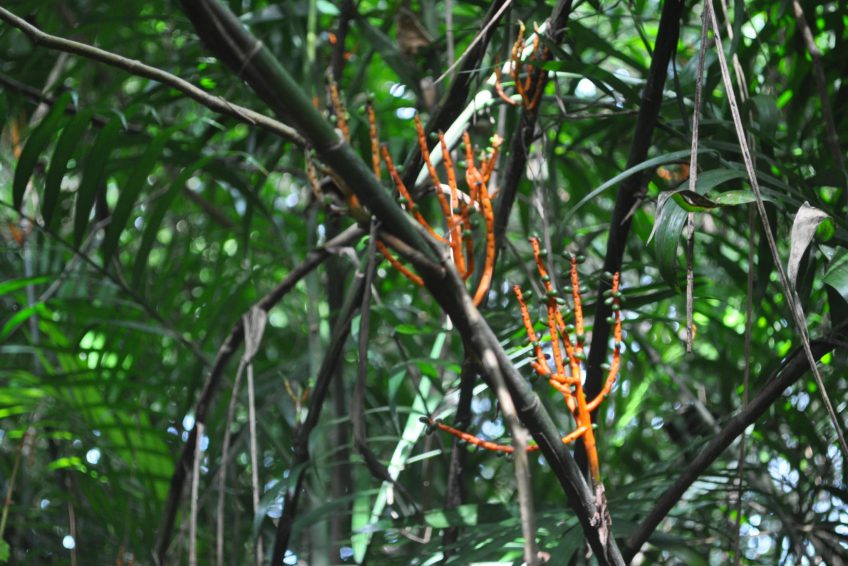
Chamaedorea seifrizii is a small, clustering palm growing to a height of 2.5 meters. Stem is green, up to 2.5 centimeters in diameter, with distinct annular rings. Leaves are petioled, pinnate, up to 60 centimeters long, dark green, gracefully arching, with slightly ribbed margins. Fruit is green, turning red to black, about 1 centimeter in diameter.
In Dr B C Wolverton’s research for NASA, Seifrizii ranks 3rd in his top 20 plants, rating an 8.4 out of 10, based on ability to remove chemical vapors, indoor air toxins, ease of growth and maintenance, resistance to insect infestation, rate of water evaporation from the leaves. The study reports the plant as effective in removing benzene, trichlorethylene and formaldehyde. For formaldehyde, it also ranks 3rd, with a removal rate of 1350 mcg/hr.
Recent reports in the media and promotions by the decorative houseplant industry characterize plants as “nature’s clean air machine,” from the National Aeronautics and Space Administration (NASA) research showing plants remove indoor air pollutants. While it is true that plants remove carbon dioxide from the air, and the ability of plants to remove certain other pollutants from water is the basis for some pollution control methods, the ability of plants to control indoor air pollution is less well established. Most research to date used small chambers without any air exchange which makes extrapolation to real world environments extremely uncertain. The only available study of the use of plants to control indoor air pollutants in an actual building could not determine any benefit from the use of plants. As a practical means of pollution control, the plant removal mechanisms appear to be inconsequential compared to common ventilation and air exchange rates. In other words, the ability of plants to actually improve indoor air quality is limited in comparison with provision of adequate ventilation.
• While decorative foliage plants may be aesthetically pleasing, it should be noted that excessively damp planter soil conditions may actually promote growth of unhealthy microorganisms.
















